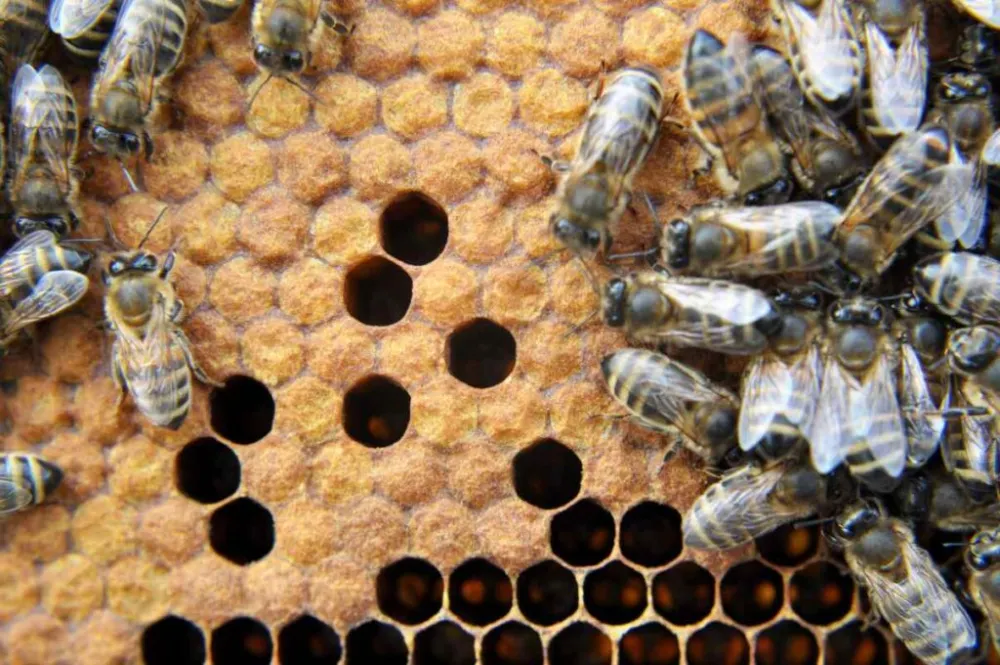Bees play a crucial role in pollination, making them vital to the health of ecosystems and agricultural productivity. However, with its diverse ecosystems and vast stretches of arid landscapes, the American Southwest has experienced a noticeable increase in bee activity in recent years. This surge in bee populations can bring about challenges, particularly for those who find swarms or hives near their properties.
Below, we delve into the reasons behind the heightened bee activity in and near Arizona, providing residents and homeowners with practical tips on how to manage these stinging insects in their vicinity safely.
Understanding the Increase in Bee Activity
In Arizona, bees are notorious for swarming during May and into June. Several factors contribute to the rise in bee populations in this region, including:
- New queens. Bee colonies create a new, extra queen, which results in the old queen and worker bees abandoning the colony and starting afresh in a different location.
- Climate change. The Southwest has experienced shifts in temperature and precipitation patterns due to climate change. This affects the availability of flowering plants that bees rely on for nectar and pollen, and therefore, bees can venture into residential properties in search of food and suitable habitats.
- Urbanization. Rapid urban development can encroach upon natural habitats, forcing bees to adapt to urban environments. Gardens, parks, and green spaces in residential areas provide abundant floral resources, making them attractive for foraging bees.
Identifying Bee Swarms and Hives
Before considering pest control and management strategies, we must know how to differentiate between bee swarms and established hives. It’s worth noting that there are different types of bees in Arizona, some of which, like Africanized bees, are more aggressive than others.
Bee swarms occur when a colony splits, and a segment of the bees and the old queen leave the hive, searching for a new nesting site. Swarms are typically temporary and may cluster on tree branches, fences, or other structures while scout bees search for a suitable location for their new hive.
Compared to bee swarms, established colonies are more permanent structures where bees have constructed combs and are actively living and producing honey. These hives are found in various locations, including tree hollows, wall voids, or even within the cavities of buildings. Colonies established around buildings like homes, schools, and businesses will pose a greater risk to people since they tend to be more territorial.
Safely Managing Bee Swarms and Hives
When dealing with bee swarms or hives near your property, it’s critical to prioritize safety for both yourself and the bees. Here are some tips for cautiously managing bee encounters:
- Remain calm. Bees are generally not aggressive unless provoked. If you encounter a swarm or hive, remain calm and avoid sudden movements or loud noises that could agitate the bees.
- Keep your distance. Maintain a safe distance from the bees and avoid disturbing them unnecessarily. Do not attempt to swat at or agitate them, as this may provoke defensive behavior.
- Provide alternative water sources. Bees need access to water, especially in arid environments. Consider setting up shallow dishes filled with water and stones to provide bees with a source of hydration away from high-traffic areas.
- Eliminate food sources, shelter, and entry points. Keep trash, food waste, and sugary substances minimal inside and outside your home. Restrict nesting sites around your landscape, and try to fill any openings in your building through which bees could enter.
- Educate yourself. Take the time to learn about bees’ importance and role in pollination. Understanding bees’ behavior and ecological significance can help foster appreciation of these pollinators.
- Avoid pesticides. Refrain from using pesticides or insecticides near areas frequented by bees. These chemicals can harm bees and may exacerbate environmental pressures on bee populations.
- Contact a professional. If you discover a swarm or hive on your property, consider contacting a local beekeeper or professional pest control service experienced in bee removal. They are better equipped to safely relocate the swarm or hive without harming the bees.

The increase in bee activity underscores the importance of coexisting harmoniously with these essential pollinators. By understanding the factors driving bee populations and implementing safe management practices, Arizona residents can mitigate potential conflicts and help conserve bees’ livelihoods. Bees are valuable contributors to ecosystems and are vital in sustaining agricultural productivity, food security, and a thriving environment.
Outnumbered by Bees? Contact Burns for Bee Control
If you’re fending off bees in Arizona, you might wonder about effective bee control methods that minimize harm to their colonies. Having hordes of bees around your home or business can be a sticky situation. Fortunately, pest control companies in Arizona, like Burns Pest Elimination, can send a professional to your property, trained to handle the situation with care and caution.
Are you looking for bee removal near you? Request a free pest control quote from the Burns Pest Elimination team today.
